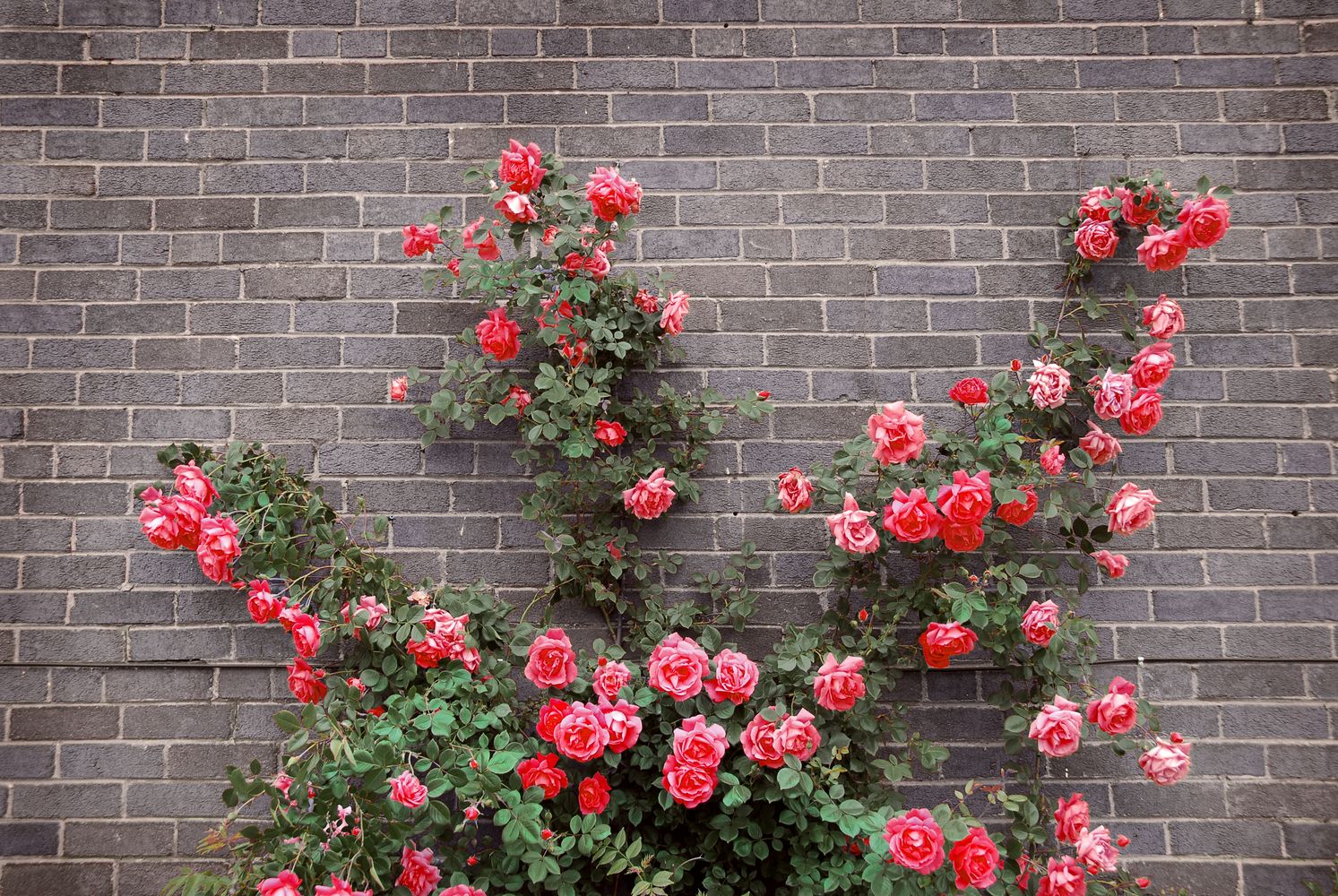Climbing roses are the enchanting beauties of any garden. With their sprawling vines, lush foliage, and abundant blossoms, they can transform an ordinary space into something magical. Whether you’re an experienced gardener or just dipping your toes into the world of horticulture, climbing roses are a versatile and rewarding choice. In this comprehensive guide, we’ll take you through everything you need to know about climbing roses—how to grow them, care for them, and enjoy their beauty for years to come.
What Are Climbing Roses?

Let’s start by understanding what climbing roses really are. Unlike what their name might suggest, climbing roses don’t naturally “climb” like ivy or wisteria by attaching themselves to structures. Instead, they produce long, arching canes that can be trained to grow vertically on supports like trellises, fences, or pergolas.
There are two main types of climbing roses: large-flowered climbers (LFCs) and ramblers. Climbers typically have larger blooms and a more formal appearance, while ramblers have smaller flowers in clusters and can grow more vigorously, often reaching great heights. Depending on the variety, climbing roses can bloom once per season or provide multiple flushes of flowers throughout the year.
Why Choose Climbing Roses?
If you’re debating whether climbing roses are right for your garden, here are a few reasons why these flowers deserve a place in your outdoor space:
- Vertical Growth: They’re ideal for creating vertical interest in your garden. Whether you have limited ground space or want to soften the look of a bare wall or fence, climbing roses can add both height and depth.
- Dramatic Effect: Their long canes can be trained to drape gracefully over arbors, trellises, and pergolas, creating stunning, romantic displays.
- Fragrance: Many varieties of climbing roses have a strong, pleasant fragrance that will fill your garden with delightful scents.
- Continuous Blooming: Some varieties, especially modern climbers, bloom repeatedly throughout the growing season, giving you months of beauty.
- Wildlife: Climbing roses attract pollinators such as bees and butterflies, helping to create a healthy and vibrant ecosystem in your garden.
Selecting the Right Climbing Rose for Your Garden
Before diving into how to plant and care for climbing roses, it’s essential to choose the right variety for your needs. Roses are incredibly diverse, and the climbing varieties are no exception.
Climate Considerations
Different climbing roses are suited to different climates. For example, varieties like ‘Iceberg’ or ‘New Dawn’ are highly adaptable and can thrive in a range of conditions, from warm, sunny climates to cooler regions. In contrast, some varieties like ‘Sombreuil’ prefer milder, temperate climates and might struggle in extreme heat or cold.
Make sure to choose a climbing rose that will flourish in your local environment. Check the plant hardiness zone recommended by the grower, or consult with a local garden center to find the best options for your area.
Size Matters
Climbing roses can vary in height, with some varieties reaching up to 30 feet or more, while others stay more compact, around 8-12 feet. Consider the space you have available and what kind of support you plan to use. If you’re training a rose on a fence or wall, make sure you select one that won’t outgrow the structure.
Flower Type and Color
Climbing roses offer a stunning array of colors, from soft pastels to deep reds and vivid oranges. The type of flower can also vary—some are single-petaled and simple, while others are full, multi-petaled blooms that have a more classic rose appearance. Decide whether you’re looking for a bold, eye-catching statement or a more understated, romantic look.
Fragrance
The scent of climbing roses can range from light and subtle to heady and strong. Varieties like ‘Zephirine Drouhin’ are known for their powerful fragrance, while others may have a gentler aroma. Consider how important fragrance is to you when choosing your rose.
Planting Your Climbing Rose
Once you’ve selected your climbing rose, the next step is getting it planted. While roses might have a reputation for being tricky to grow, with the right preparation and care, they’re actually quite resilient.
When to Plant
The best time to plant climbing roses is either in the early spring or late fall, depending on your climate. In warmer regions, fall planting allows the rose to establish its roots over the winter, leading to a stronger plant come spring. In cooler areas, spring planting is preferred so the plant can start growing as the weather warms.
Choosing the Perfect Location
Climbing roses love sunlight. Aim for a spot that receives at least six hours of direct sunlight per day. However, in particularly hot climates, you may want to plant them in a location where they get some afternoon shade to prevent the flowers and foliage from scorching.
Climbing roses also need good air circulation to help prevent fungal diseases like black spot and mildew. Avoid placing them in cramped or overly humid areas.
Preparing the Soil
Roses prefer well-drained, fertile soil. Before planting, loosen the soil in your chosen area and work in plenty of organic matter like compost or well-rotted manure. This will provide essential nutrients and help with drainage. You can also mix in a bit of bone meal or rose fertilizer to give your plant an added boost.
Planting Process
- Dig a Hole: Make sure the hole is wide and deep enough to accommodate the roots of the rose. As a general rule, dig a hole that’s about twice as wide and slightly deeper than the root ball.
- Position the Plant: Place your climbing rose in the hole, ensuring that the root ball is level with the surrounding soil. If you’re planting a grafted rose, make sure the graft union (the bump where the rose was grafted onto the rootstock) is just below the surface of the soil.
- Backfill and Water: Gently fill the hole with soil, pressing it down lightly to remove any air pockets. Water thoroughly after planting to help the roots settle.
- Support Structures: If you’re planning to train your rose to climb, install any supports (like trellises or arches) at the time of planting. This allows you to guide the growth from the start without disturbing the roots later on.
Training and Supporting Your Climbing Rose
Unlike self-clinging plants, climbing roses need a little help when it comes to climbing. Their long canes must be tied and trained to a structure to achieve the desired effect.
Types of Supports
You can grow climbing roses on a wide variety of supports, depending on the look you’re going for:
- Trellises: A classic option for supporting climbing roses. Trellises can be freestanding or mounted on a wall, and they provide a beautiful backdrop for the rose’s blooms.
- Arbors and Pergolas: For a more dramatic effect, climbing roses can be trained to grow over arches or pergolas, creating a tunnel of flowers that you can walk under.
- Fences and Walls: Climbing roses can soften and beautify a plain fence or wall, creating a living tapestry of blooms.
How to Train Your Rose
Training a climbing rose involves tying the canes to the support in a way that encourages growth and maximizes blooming. Here’s a step-by-step guide:
- Tie Canes Horizontally: While it’s tempting to let the canes grow straight up, horizontal training actually encourages more blooms. Roses bloom more heavily along horizontal or diagonal canes, so gently bend and tie them to the support as they grow.
- Use Soft Ties: Avoid using wire or anything that could cut into the stems. Instead, use soft ties like strips of cloth, twine, or specially designed plant ties that won’t damage the canes.
- Prune Regularly: As your rose grows, prune back any dead or weak canes to keep the plant healthy and promote stronger growth. Regular pruning also helps to shape the rose and keep it under control, especially if you’re working with limited space.
Watering and Feeding Your Climbing Rose
Climbing roses, like all roses, need regular watering and feeding to thrive. Here’s how to keep your rose hydrated and nourished.
Watering
- Newly Planted Roses: In the first year after planting, make sure your rose receives a deep watering at least once a week, especially during dry spells. Water at the base of the plant to avoid wetting the leaves, which can lead to fungal diseases.
- Established Roses: Once established, climbing roses can be a bit more drought-tolerant, but they still appreciate consistent watering. If you’re unsure whether your rose needs water, check the soil about 2 inches down—if it’s dry, it’s time to water.
Feeding
Roses are heavy feeders, meaning they need regular nutrients to produce their best blooms. Use a slow-release rose fertilizer in the spring as new growth begins, and follow up with additional feedings every 4-6 weeks during the growing season.
Alternatively, you can apply organic fertilizers like compost, manure, or fish emulsion to the base of the plant. These provide a slow, steady release of nutrients and help improve the soil’s structure over time.
Pruning Climbing Roses
Pruning might seem intimidating at first, but it’s an essential part of rose care that promotes healthy growth and abundant blooms. Don’t worry—once you get the hang of it, pruning your climbing rose will become second nature.
When to Prune
The best time to prune climbing roses is in late winter or early spring, just before new growth starts. This allows
you to remove any dead or damaged wood from the previous season and shape the plant for the upcoming growth cycle.
How to Prune
- Remove Dead Wood: Start by cutting out any dead, damaged, or diseased canes. This will improve air circulation and reduce the risk of fungal infections.
- Shape the Rose: Next, look at the overall shape of the plant. Trim back any canes that are growing in the wrong direction or interfering with others. Keep the healthiest canes and aim to train them in a horizontal or diagonal direction to encourage blooming.
- Cut Back Side Shoots: If your rose produces a lot of side shoots (smaller branches growing off the main canes), you can cut these back to about 6-8 inches to keep the plant tidy and encourage larger blooms on the remaining shoots.
Common Problems and Solutions
Climbing roses are generally hardy, but like all plants, they can sometimes fall prey to pests and diseases. Here are some common issues and how to address them.
Pests
- Aphids: These tiny insects can suck the sap from your roses, weakening the plant and causing distorted growth. They can often be washed off with a strong spray of water, or you can treat the plant with insecticidal soap.
- Spider Mites: These pests are more common in hot, dry weather. To control them, keep your plant well-watered and consider using a miticide if the infestation is severe.
Diseases
- Black Spot: This fungal disease causes black spots on the leaves, leading to defoliation and weakened plants. Prevent black spot by ensuring good air circulation and avoiding overhead watering. If your plant becomes infected, remove and dispose of affected leaves and treat with a fungicide if necessary.
- Powdery Mildew: This fungal disease appears as a white, powdery substance on the leaves and stems. It’s often caused by humid conditions. To prevent it, water at the base of the plant and keep the area around your rose clear of debris. Prune regularly to improve air circulation.
Enjoying the Beauty of Your Climbing Rose
Once your climbing rose is established and blooming, all that’s left to do is enjoy its beauty! Here are a few creative ways to make the most of your roses:
- Outdoor Living Spaces: Train climbing roses around a pergola or arbor near your patio or deck to create a shaded, floral retreat.
- Fragrant Walkways: Line a path or walkway with trellises or arched supports covered in climbing roses for a fragrant stroll through your garden.
- Cut Flowers: Many climbing roses make excellent cut flowers. Bring the beauty and fragrance indoors by snipping blooms for vases or arrangements.
Conclusion
Climbing roses are a magnificent addition to any garden, offering height, fragrance, and months of beautiful blooms. While they do require some effort in terms of planting, training, and care, the rewards are well worth it. With the right approach, you’ll have a climbing rose that not only enhances your garden but also brings you joy for years to come. Whether you’re dreaming of a rose-covered pergola or a fence dripping with blossoms, the world of climbing roses is as enchanting as it is fulfilling. Happy gardening!




